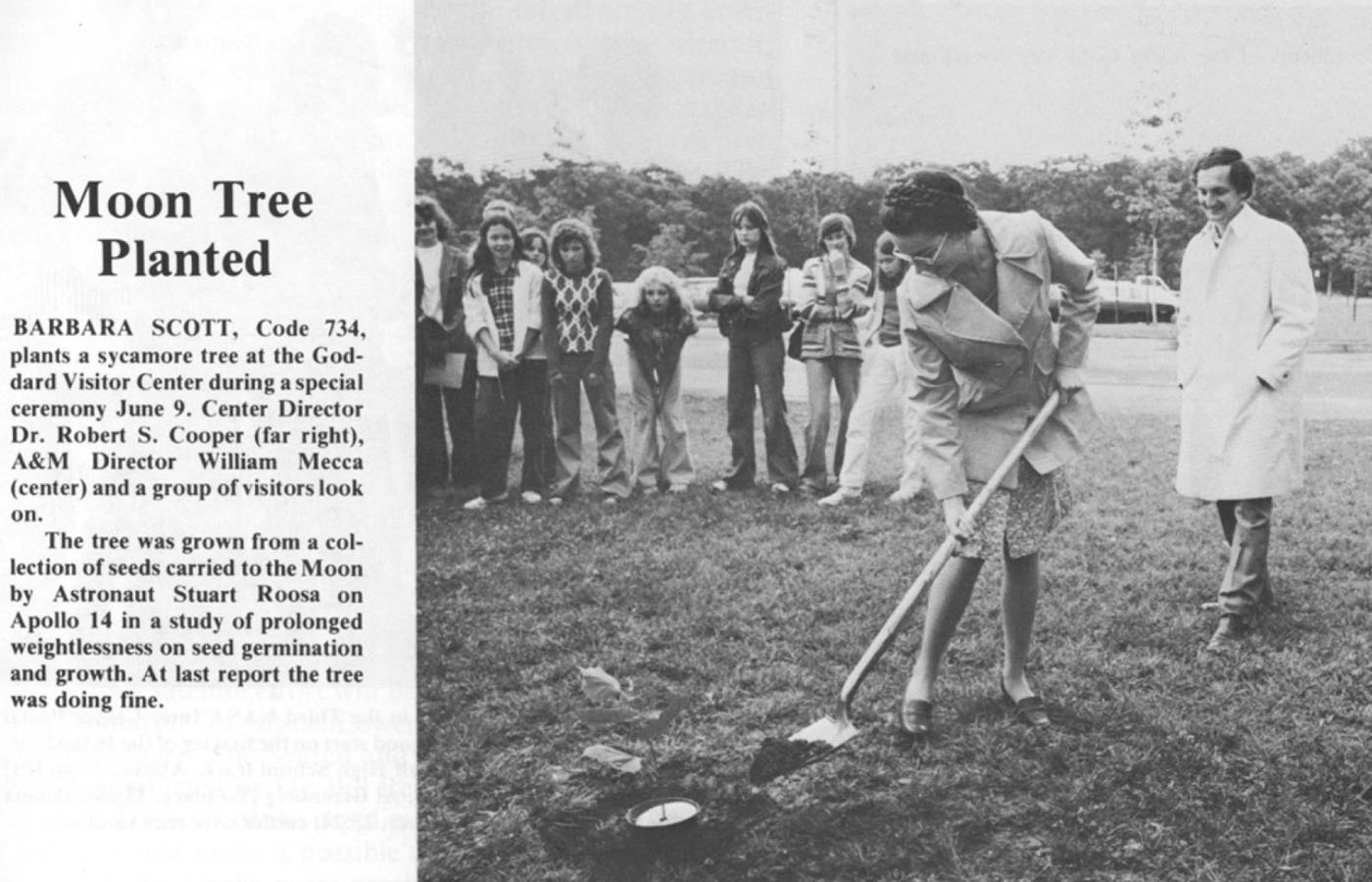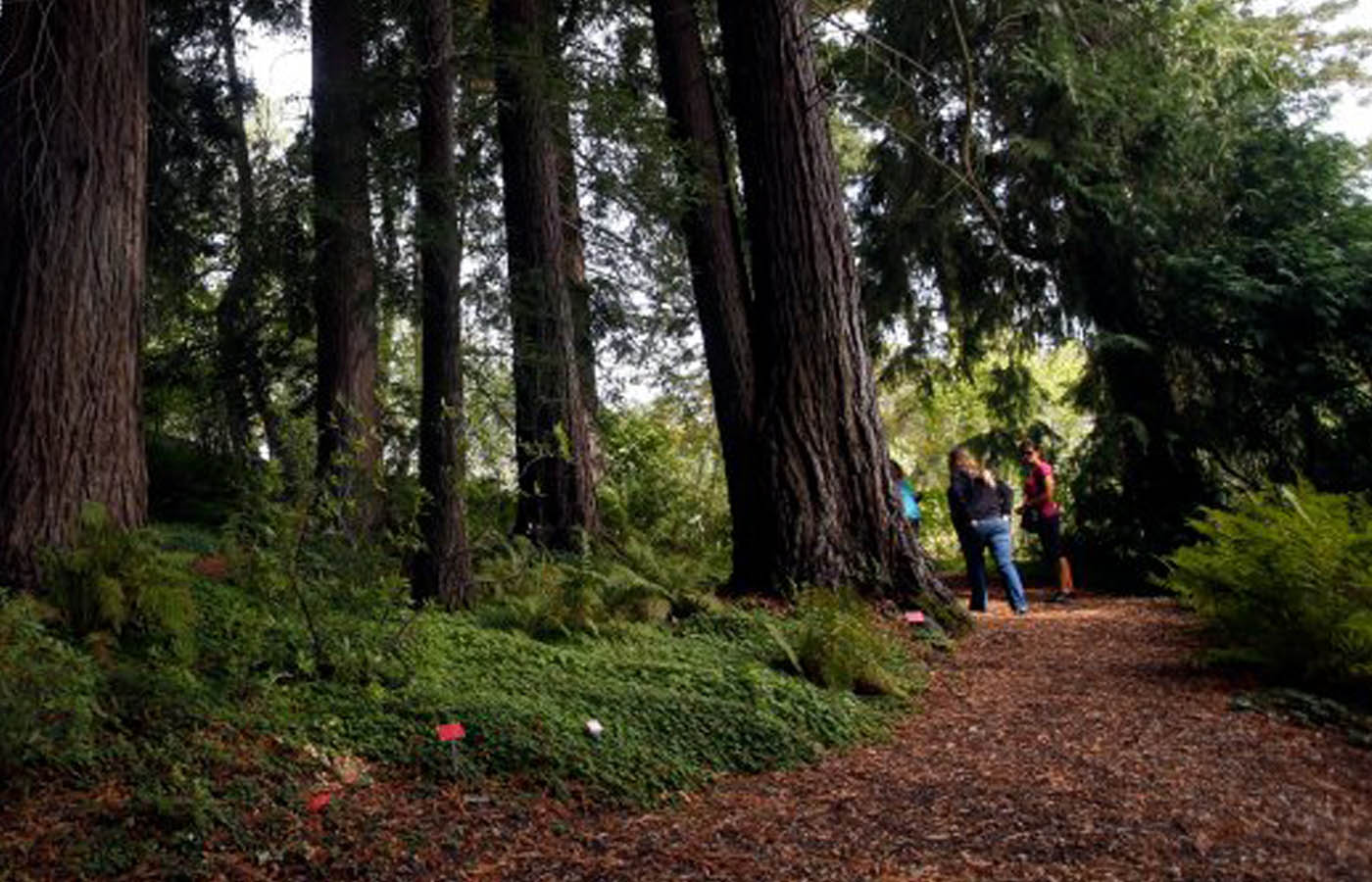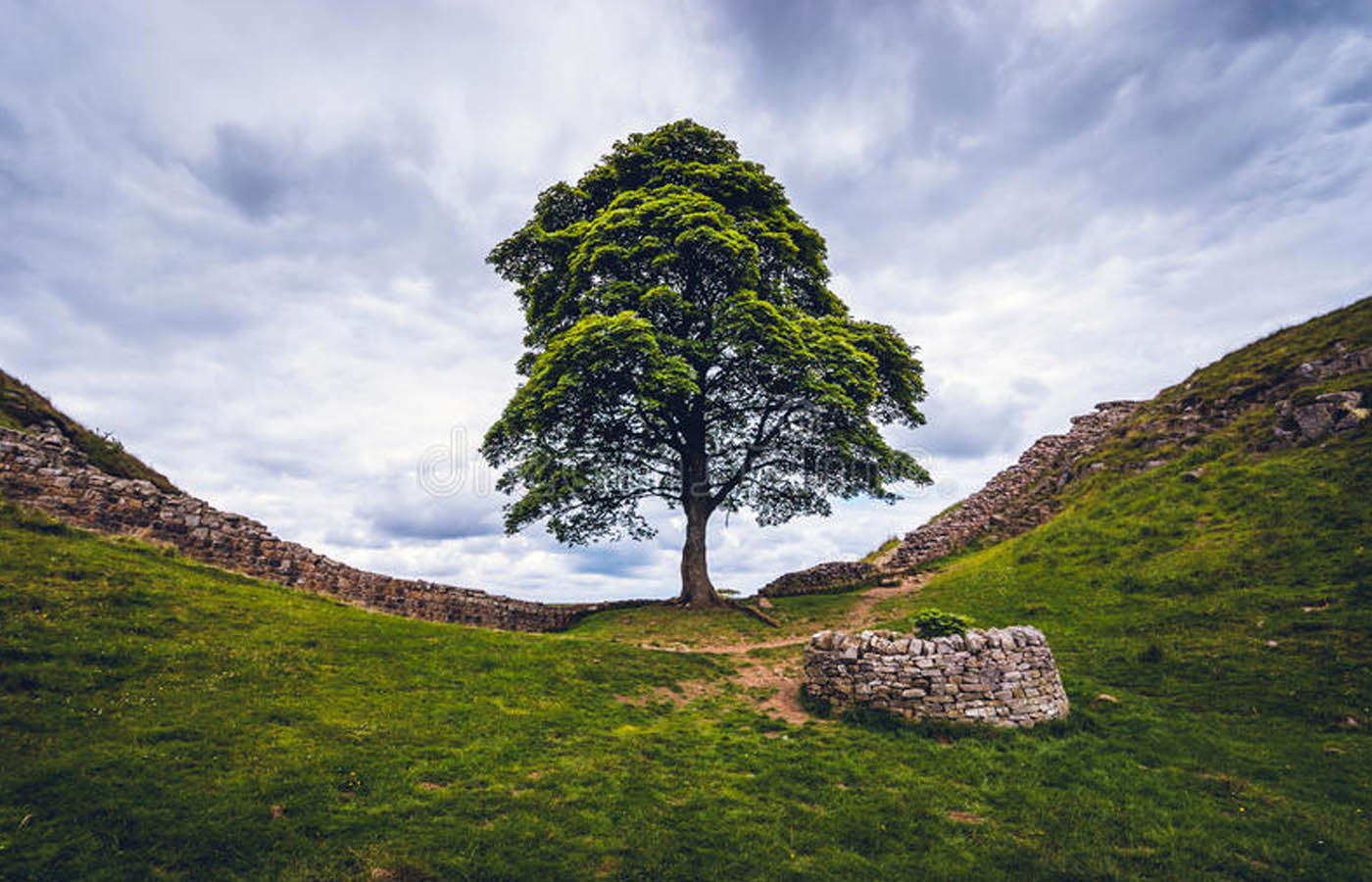A little known fact is that a of group of trees that traveled to outer space have been thriving here on the planet. This group of special and elite trees have since become known as moon trees. It was part of a project carried out in conjunction between the U.S. Forest Service and Nasa during the Apollo 14 mission. The arboreal space oddities were almost forgotten by history until a grade-school teacher stumbled upon one – and, it’s possible to go see them for yourself.
Just outside and in front of NASA’s Goddard Space Flight Center in Greenbelt, Maryland, a moon tree is growing. It is healthy with a plethora of colorful fall leaves. But the reality is that this is not exactly an ordinary tree. Planted sometime in 1977, this tall tree has an incredible tale: grown from a seed that orbited the mood in 1971 during the Apollo 14 mission.

Once you’re aware of the story, this sycamore tree ends up appearing more like a statesman or ambassador, than a regular tree at NASA’s Goddard Space Flight Center entrance and greets visitors. Most passersby do not realize the significance of this unassuming tree, or as they pass under the boughs and branches going to and from the main entrance to the building. This particular tree is dubbed “The Goddard sycamore”, and it is only one of many unique trees referred to as “moon trees” – trees that traveled into outer space, orbited the moon, returned to earth, were germinated and planted – they are now thriving in various locations around the country.
The seeds traveled with astronaut Stuart Roosa, the command module pilot at the time of the 1971 Apollo 14 mission. What does “command module pilot” mean exactly? That Roosa stayed in lunar orbit all the while commander Alan Shephard and lunar module pilot Edgar Mitchell descended down to the lunar surface and first set foot. While Stuart Roosa was in lunar orbit, the hundreds of seeds he had tucked away in the belongings he carried with him, circled around the moon with him.

Roosa had worked with the U.S. Forest Service prior to becoming an astronaut and carried the seeds on his person during the mission in order to raise awareness for the federal agency. It was also part experiment by NASA to start answering questions about the effect of microgravity on plants.
Since then, many of these seeds have been planted across the country, but were largely forgotten after the fact. It wasn’t until sometime around 1996 that a third-grade teacher stumbled across a curious tree with a tiny wooden sign marked with the words “moon tree”. Led by sheer curiosity and never having heard of such a tree uncovered the incredible story. It took a lot of poking around and tracking down in order to reveal the origin of the trees – now considered like living representatives and symbols of human and scientific achievement.

So far, 80 trees in total have been verified and registered as part of the official moon tree and include species such as sycamore, Loblolly pine, Douglas fir, Redwood, and Sweetgum and are located from parks and botanical gardens to museums, universities, and other locations.



